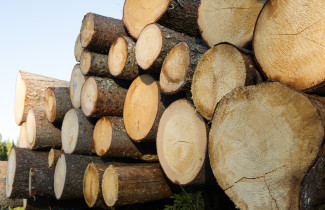MSc Chenyang Cai’s doctoral thesis investigated the effects of water and weather exposure on the chemical components, cellular structure, and physical properties of thermally modified wood (TMW).
The results showed that thermal modification reduced the equilibrium moisture content and improved the dimensional stability while it did not affect the hardness of wood after exposure to different humidity conditions. The prolonged exposure to water mainly changed the composition of hemicelluloses and cellulose of wood, increased its hygroscopicity, and promoted the degradation of the cell wall structure. TMW showed slightly faster cell wall degradation rate than unmodified wood, probably due to its initial higher acidity as thermal processing releases some organic acids to wood. Natural weather exposure leaves wood with a grey surface hue due to the degradation of lignin and leaching of the degradation products. TMW presented less changes in lignin structure and color due to its condensed lignin structure and lower hygroscopicity in comparison to unmodified wood. The lower EMC value of TMW indicates that thermal modification can limit water absorption to wood during weathering. Therefore, TMW showed less cupping than unmodified wood in wet conditions. Additionally, increase in the thermal modification intensity improved weathering performance of wood by reducing the surface chemical changes, water accessibility and cell wall porosity. This study demonstrates the known performance of TMW in non-structural applications involving high humidity or frequent water contact conditions.
Throughout history, wood has been used as raw material for many purposes. Particularly in outdoor applications the exposed wood loses its performance gradually due to many reasons, such as sunlight, changes in relative humidity and temperature, abrasion by windblown materials, pollutants, microbes, and various human activities. Therefore, wood modification to alter its properties and gain better material performance has become indispensable. Thermal modification has developed into the most common industrial modification process to improve dimensional stability, durability of wood in outdoor applications without using chemicals. However, the performance of TMW in frequent wet outdoor conditions is not sufficiently documented and understood. This study provides a realistic picture of the underlying processes of thermally modified wood during its usage.
The doctoral dissertation of MSc Chenyang Cai, entitled Effects of long-term moisture and weather exposure on the structure and properties of thermally modified wood will be examined at the Faculty of Science and Forestry on the 12th of June (online). The opponent in the public examination will be Associate Professor Emil Engelund Thybring, University of Copenhagen, Denmark and the custos will be Associate Professor Antti Haapala, University of Eastern Finland. The public examination will be held in English.


